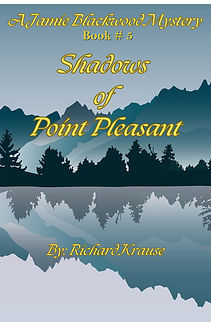It's green, green, they say................
- Richard Krause
- Sep 24, 2018
- 3 min read
So good day mates, sorry guys life got in the way the past couple of days, what with publishing another book, keeping up with the “honey do” list and generally trying to live in the moment the blog lost out. That plus I have finally discovered the truth, really good cigars and COPD do not mix well. Who Knew, oh well, life’s sometimes a B_ _ _ _!
So as I sit here enjoying my evening cup of the elixir of life, starting a binge watch of “Outlander” and contemplating what subject we shall talk about on this most fabulous of days. I think we shall continue on with our discovery of the stone of romance, that wondrous green beryl the Emerald.
In particular, the Spanish Inquisition Necklace
One doesn’t normally associate beautiful jewelry with the time of the Spanish Inquisition. But in the Smithsonian Institution’s collection of gems, there is an exquisite necklace of diamonds and emeralds.
It is a spectacular double row of diamonds and emeralds ending in a chandelier of emeralds. There is unfortunately very little information about the provenance of this necklace. The large diamonds and Columbian emeralds were most likely cut in India in the 17th century. This would make them one of the earliest examples of cut gemstones in the Smithsonian’s Collection. There are really only legends surrounding this necklace. They indicate that it was worn at times by Spanish and French royalty. In the early 20th century, it was purchased by the Maharajah of Indore, whose son sold the necklace in 1947 to Harry Winston. Winston subsequently sold the necklace to Mrs. Cora Hubbard Williams of Pittsburgh. She bequeathed it to the Smithsonian in 1972.
Emeralds are a form of crystal known as beryls. Beryls are normally clear crystals, but when infused with chromium or vanadium, they attain various gradations of green. The purest green is the rarest emeralds and many people actually prefer an emerald that has a blue-green tint.
Before the 16th century, the only known emerald deposits were in Cleopatra’s Egyptian mines. But after emeralds were discovered in Columbia, those became the “gold standard” in emeralds. Columbian emeralds have been discovered by archaeologists among artifacts of such tribes as the Inca, Maya, Aztec, Toltec and the lesser-known Chibcha Indians. Emeralds are among the rarest of gemstones and can be more expensive per carat than even the finest diamonds! They are a hard mineral, with a Moh’s hardness scale of 7 or 8 (compared to a diamond’s 10). While most emeralds are found in Africa, Russia and Africa, there have been discoveries of emerald deposits in North Carolina! Some of which I have had the good fortune to have found.
The beryl is the family of crystal that creates emeralds and aquamarines, when its color is green or blue-green, respectively. Red beryl is bixbite or red emerald or scarlet emerald, pink beryl is morganite, white beryl is goshenite, and a clear bright yellow beryl is called golden beryl. Other shades such as yellow-green for heliodor and honey yellow are common. It can also come in violet.
The earliest known source of emerald was near the Red Sea in Egypt, the so-called Cleopatra's emerald mines. They were probably worked from about 2000 B.C., apparently the location of them was lost in the middle ages, and not rediscovered until 1818. Most emeralds used in ancient jewelry are believed to have come from these mines. They are not worked nowadays because of the low quality of crystals found.
Emeralds have been found in Austria since Roman times; these are no longer commercially mined.
Columbia is generally recognized as the source of the world's finest quality emeralds, both in the past and the present. The Columbian Indians were using them before 1537, when Quesada conquered Columbia. Russia has been another important source of emeralds in the past. Emeralds were discovered in Australia in 1890 in New South Wales. Emeralds were discovered between 1927 and 1929 in South Africa, followed by other sources. Another important source of superb quality emeralds, usually only of small size, is in Zimbabwe formerly Southern Rhodesia. These were discovered only in 1956. Emeralds were known in India from antiquity, but their source is not certain. The quality of Indian emeralds is very variable, but most are polished as beads. Other sources of emerald include Norway, North Carolina, Connecticut, Maine, New Hampshire, although none of these are very important. But if you’re vacationing in any of those states, it would be best if you keep your eyes peeled for any stray beryls!


























Comments